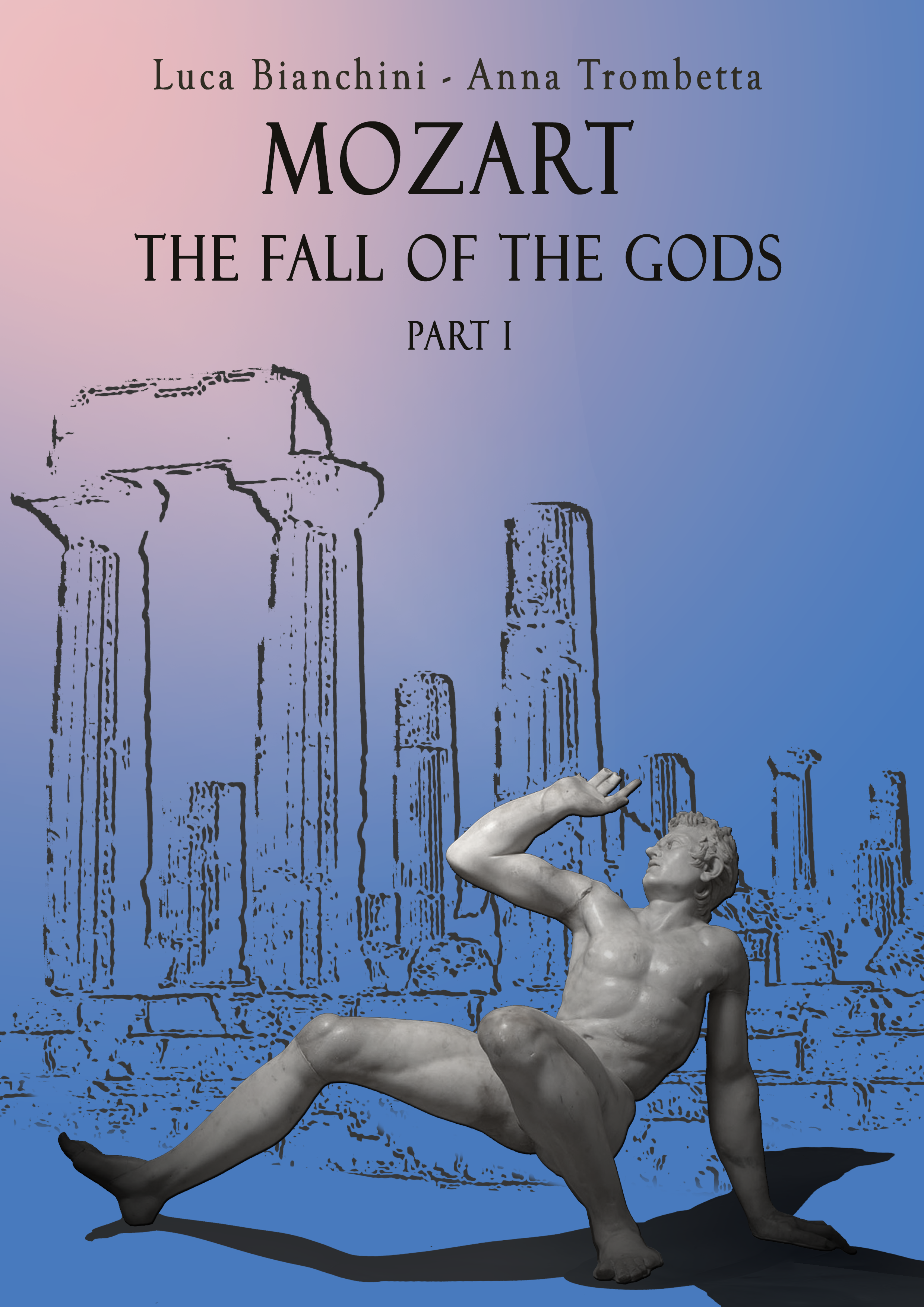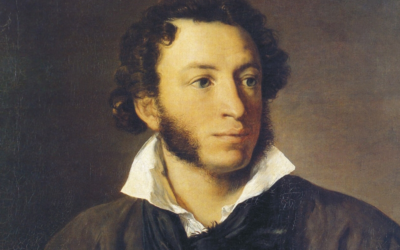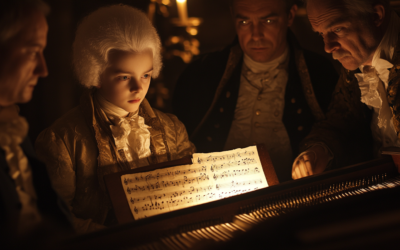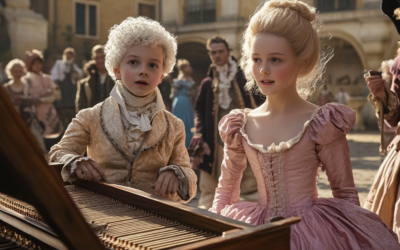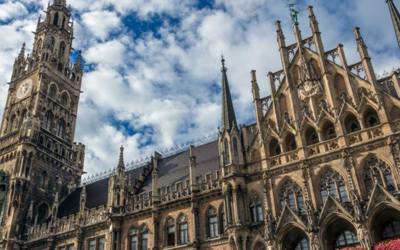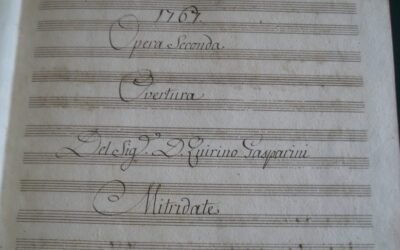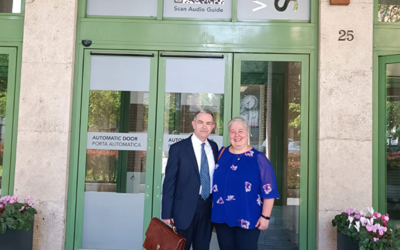Mozart’s Quartet of Lodi
An Exploration of the Origins and Questionable Legacy of Mozart’s First String Quartet
Mozart’s journey through Italy left us with the famous Quartet of Lodi, a work often considered a testament to his early mastery. Yet, a closer look reveals an over-reliance on Leopold’s corrections and the prevailing Italian influences of the time.
The quartet, attributed to a 14-year-old Mozart, is riddled with stylistic and technical gaps, suggesting that it was less of an original creation and more a product of parental guidance and external models.
Mozart: The Fall of the Gods
This book compiles the results of our studies on 18th-century music and Mozart, who has been revered for over two centuries as a deity. We dismantle the baseless cult of Mozart and strip away the clichés that falsely present him as a natural genius, revealing the contradictions in conventional biographies. In this work, divided into two parts, we identify and critically analyze several contradictory points in the vast Mozart bibliography. Each of the nearly 2,000 citations is meticulously sourced, allowing readers to verify the findings. This critical biography of Mozart emerges from these premises, addressing the numerous doubts raised by researchers.
"The quartet attributed to a young Mozart reveals more about the influences he followed than the genius he supposedly was."
Mozart: The Fall of the Gods
The Misleading Beginnings in Lodi
Mozart’s Quartet in G major (K.80), commonly known as the Quartet of Lodi, has often been celebrated as a youthful masterpiece, composed during his first Italian journey in 1770. However, the truth is more complicated. Initiated during a gruelling journey from Milan to Parma, this composition bears the heavy hand of his father, Leopold. The manuscript, with its unusual note of location and time—“à Lodi. 1770. le 15 Mars alle 7 di sera”—suggests a need to immortalise the moment, perhaps pushed by paternal influence.
Although the idea of a 14-year-old composing unprompted sounds impressive, one must question the circumstances. Could it be that Leopold, as in so many instances, was guiding the process behind the scenes? This would not be the first or last time the elder Mozart intervened in his son’s work.
Leopold’s Heavy Hand
The autograph of the quartet, while bearing Wolfgang’s name, reveals substantial input from Leopold. The Adagio, Allegro, and Minuet movements—initially conceived as a uniform trio—were meticulously corrected by Leopold. The Minuet’s trio, in particular, was significantly altered, with Leopold lowering the violin parts by an octave, a decision that shapes the version we know today. Scholars also suggest that the Rondo Contraddanza finale, written on a different paper, may have been added years later in Salzburg.
The quartet’s final form, though attributed to Wolfgang, clearly showcases Leopold’s ‘musical experience’ in revising and polishing his son’s rough sketches. How much of the piece can truly be credited to Wolfgang remains an open question.
Influences and Comparisons
Mozart’s Quartet of Lodi suffers not only from an overreliance on his father’s corrections but also from an obvious debt to the Italian quartets of the time. Musicologists such as Fausto Torrefranca have noted the quartet’s stylistic backwardness compared to the works of contemporaries like Boccherini, Giordani, and Pugnani. In particular, the Lodi Quartet lacks the dynamic interplay and formal sophistication seen in the Italian string quartets emerging in Paris and London.
Torrefranca has further argued that the Italian quartet form itself evolved from the concerto, with Boccherini being a major influence. The Lodi Quartet, by comparison, pales in complexity and innovation. The dominance of the violin over the other instruments, while a hallmark of Boccherini’s quartets, is handled poorly in Mozart’s work, where technical gaps and underdeveloped ideas persist.
A Technically Flawed Composition
Perhaps the most glaring evidence of Mozart’s immaturity in this quartet comes in the final Rondo movement. In measure 7, the trills in the cello part create unsightly parallel fifths with the first violin and consecutive sevenths with the viola. The modern interpreter is often forced to correct these blatant errors, abbreviating the trills or performing them more cautiously to avoid disrupting the harmonic structure. This technical oversight reveals how far Wolfgang had yet to go before mastering the form.
You May Also Like
Mozart and Salieri
Pushkin does not see Salieri as a mere mediocre. In fact, Salieri embodies the struggle of the artist, much like Michelangelo, who reaches greatness through relentless effort. Pushkin himself identifies with both Mozart and Salieri, but he emphasises that true art demands work, discipline, and sacrifice. In poisoning the Mozartian element within himself, Salieri performs a service to art, freeing it from the frivolity of effortless genius. ‘Can genius and malice coexist?’ Pushkin’s answer is complex, but in the end, Salieri’s act seems to affirm that true creation lies in the hands of those who strive.
The Fabrication of Genius
Leopold Mozart’s tireless efforts to promote his son Wolfgang as a child prodigy were rooted in manipulation, exaggeration, and a relentless drive for social success. Far from being a miraculous genius, Wolfgang was pushed into the spotlight by his father, whose grandiose claims often obscured the reality of his son’s abilities.
The Myth of Mozart
A critical examination of Wolfgang Amadeus Mozart’s life reveals a man shaped more by his father’s ambitions than by innate genius. Stripped of the myths, Mozart’s early years reflect a childhood dominated by relentless touring, inconsistent education, and a legacy built on exaggerated achievements. Discover the real story behind the legend.
The Return of Gatti’s Aria
In the magnificent Max Joseph Hall of the Residenz München, tenor Daniel Behle performed the aria “Puoi vantar le tue ritorte” by Luigi Gatti, taken from his opera Nitteti. This concertante piece, for which we composed the cadenzas, was brought to life by the Salzburger Hofmusik orchestra under the direction of Wolfgang Brunner.
Quirino Gasparini’s Music Performed for the First Time
For the first time in modern history, Quirino Gasparini’s music has been performed. This concert, featuring arias from Mitridate and Beethoven’s Seventh Symphony, was conducted by Maestro Leonardo Muzii, with soprano Anastasiia Petrova.
Teaching Mozart at Bocconi University
We delivered a four-hour lecture on Mozart at Bocconi University, showcasing unpublished music by Gasparini, Gatti, and Tozzi while comparing textual and musical treatment with Mozart’s works. Unseen variants from Le Nozze di Figaro were also revealed.

